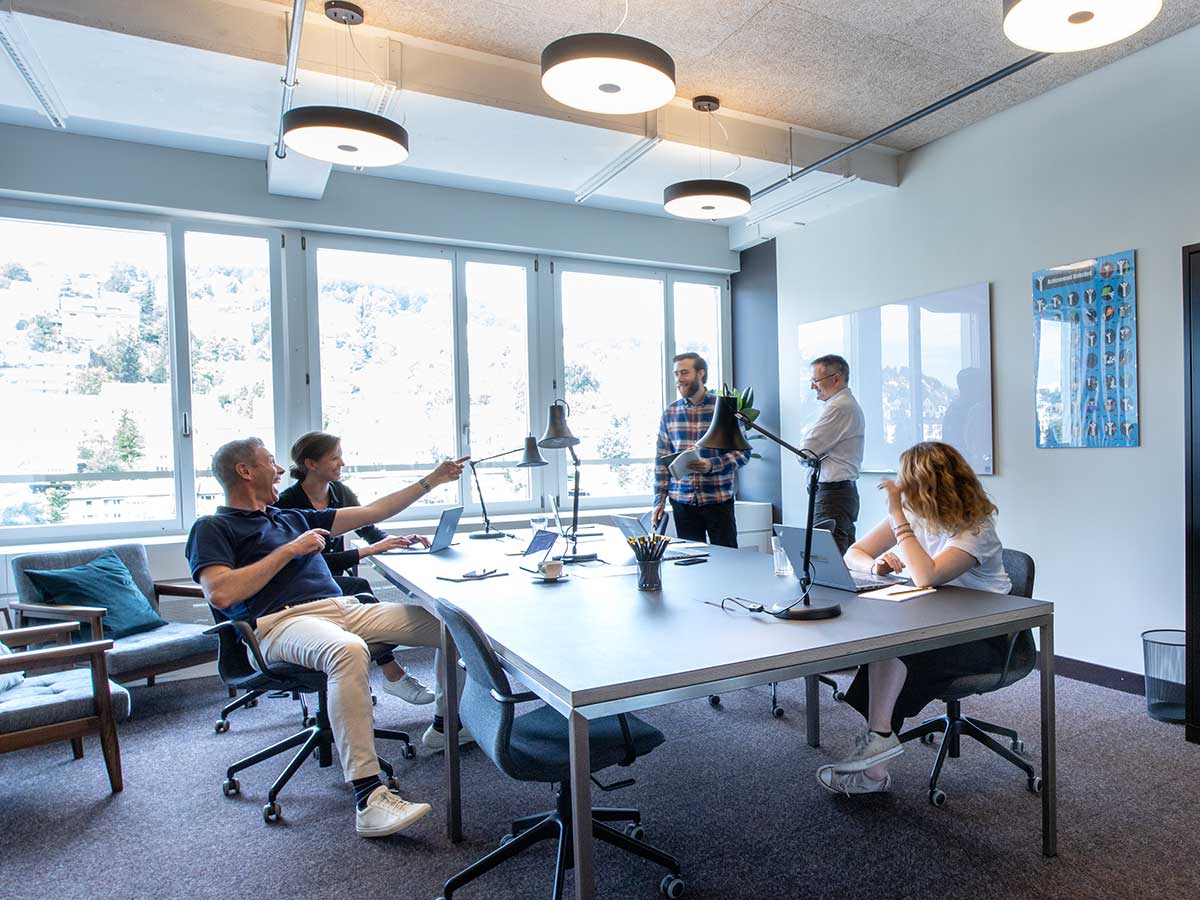Everyone’s talking about coworking and flexspaces. Is this just hype or a sustainable trend? A large number of international studies clearly show that it is the latter: a trend that is being fuelled by the global COVID-19 crisis. Various studies show that the share of flex offices will grow to 10 to 20 percent in the next few years.
Regardless of this, it is worth taking a sober look at whether a flexible solution is an option for your company. The following criteria will help you make your decision.
1. Fast cycles – fast business growth
Rapidly growing companies need space that grows with them. It is difficult, if not impossible, to predict this realistically in advance for the next 5 to 10 years. Growth expectations are often overestimated, and sometimes underestimated. But nothing is more costly than building and maintaining an inventory of workspaces.
2. Digital transformation effect – uncertain long-term strategy
Digitalisation is now having a significant impact on a wide range of business processes in most sectors. As a result, traditional activities are either being automated or outsourced to partners. This allows companies to focus more on their core business, increasing productivity with fewer employees.
In addition, the accelerating pace of digital transformation is creating significant uncertainty about long-term business strategy. Planning horizons are becoming shorter and shorter, and the buzzword ‘agile’ has become increasingly important in most organisations.
These are all reasons to consider a flexible office solution that allows you to quickly and easily adapt to your space needs, regardless of your future strategy or how your business evolves.
3. Lean management – focus on the core business
Having your own office is something great, but it often becomes the most important side issue of everyday business life. And always just when you should be focusing exclusively on your core business. In phases of strong growth, but also in phases of decline, the office space suddenly becomes the central agenda item in the management meeting – although it is precisely in these times that one should concentrate more on one’s customers. The job of a facility manager, a real estate scout or a sublessee is a time-eater and distracts from the primary, value-creating tasks.
4. Cost transparency and cost control
Owning your own office space often costs more than you think, and not just because of direct costs like rent. There is a long list of indirect costs that are greatly underestimated or simply forgotten when planning a move. The pure rental costs usually only account for 30 to 35 of the total office costs. Not to mention the additional costs for space reserves that need to be taken into account from the outset so that the office can cope with any future growth.
5. Accessibility – use instead of own
No matter how big your company is, you often don’t have enough meeting rooms and workshop spaces, respectively they are too big, too small, or they just stand empty for a long time. Most companies would love to have lounges, their own bistro, spacious outdoor areas, a kitchen for team events or a podcast room, but a single company can rarely afford this. For members in a modern coworking space, these unique “perks” suddenly become reality. The idea of the sharing economy significantly increases the quality of the office.
6. New collaboration – sharing is inspiration
Informal conversations over coffee or lunch are often seen as a source of new ideas and innovation. In a coworking space with a diverse membership (and not just people from your own company), these important conversations become even more interesting because the often-cited corporate tunnel vision is eliminated.
7. War for Talent – Employee Attractiveness
If you are looking for highly skilled people today, you have a lot to offer. This is true whether you are a start-up or an established company. In addition to a company’s central location, the much-coveted millennials also cite the attractiveness of the actual workplace as a reason for accepting a job.
8. Mobile Workforce – Hybrid Workplace Models
Triggered by digitalisation and the resulting increase in mobility, we can now work from anywhere. This inevitably leads to hybrid workplace models, accelerated by the Covid pandemic. This means that in the future, an organisation will need fewer workplaces rather than more, but they can be flexibly ‘managed’. In addition, the need for modern meeting and workshop infrastructure will increase in order to still be able to collaborate with all employees on a selective basis.
Sources:

